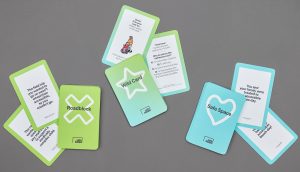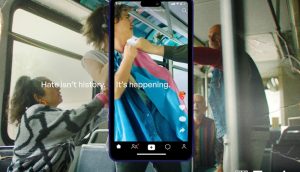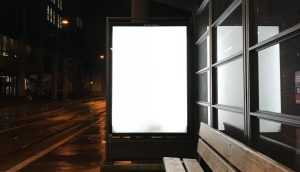At first glance, it looks like a natural disaster of Katrina-like proportions struck Los Angeles – the cover of the LA Times LATExtra section depicting a scene of destruction at Universal Studios, the headline blaring ‘Universal Studios Hollywood Partially Destroyed.’
It’s an arresting cover, comprised of a three-quarter page photo and a side-sliver of text. And with all the carnage underneath, it’s admittedly easy to miss the ‘Advertisement’ in red underneath the LATExtra banner. The theme continues on the inside front cover, with the headlines getting sillier: ‘Colossal Footprints Found On Beach’ and ‘Mysterious Gaping Hole Found In Ocean Liner.’ But then, right beside it, is the real LATExtra cover, with the more pedestrian headline, ‘Impasse on state budget raises fears.’
The true reason for the cover wrap’s existence is only revealed on the wrap’s back cover: a new 3D King Kong ride at Universal Studios Hollywood. ‘He’s never been this real’ the text declares.
But was it too real for readers? A mini media storm stirred up in the blogosphere, with The Wrap and Huffington Post picking up the story, and the LA Times addressed it in a blog post the next day, saying ‘many readers wrote to The Times to say they were unhappy about being misled.’ According to the blog, Times publisher Eddy Hartenstein was unapologetic in an article in that day’s newspaper, saying readers understand that ads support the journalism the Times provides.
We were curious, though, about what media execs thought of this: has this advertorial gone too far or is it a brilliant media move?
‘I would say that it would grab attention, of course,’ Lynette Whiley, managing director, client leadership, Mindshare, tells MiC. ‘The reader trusts the paper to know what’s going on. I can’t see whether or not the font is the same, but I do think that this is going a little far. I think that this is breaking the trust with the reader. It is very close to what the newspaper would look like. I know that this is what a lot of advertisers, and we, want, but I don’t know if it is the right thing for the newspaper – it’s crossed the line. When you buy a newspaper and an ad looks like editorial, you break the trust with the reader and it takes a lot of time and money to get it back.’
‘It’s a great idea,’ she continues. ‘And it’s going to get attention, people are going to read it, it will get buzz for sure – you and I are talking about it – but I don’t think this is right.’
Brenda Bookbinder, VP director print, PHD, says that while she might not call it a ‘disaster,’ she would call it a ‘little bit’ of bad judgment.
‘You have to understand that everyone is not like you,’ she explains. ‘There could be people that might not understand English very well, children, and people that don’t understand that it’s a joke, and that could be really frightening for them.’
‘I mean, I love when things like that are done right,’ she continues, citing as an example PHD US’s winning 2009 campaign for HBO’s True Blood, which also included a cover wrap of the LA Times. ‘But I think that it is up to the editors to take care of the readers and make sure that the readers are not confused. You want to add something to the reader’s experience, not fool them. I think it could have been done a bit better, but I blame the publication more than I blame the advertiser. It’s really up to the editor to take care of the readers.’
Related articles: Universal Disaster, from Stimulant























